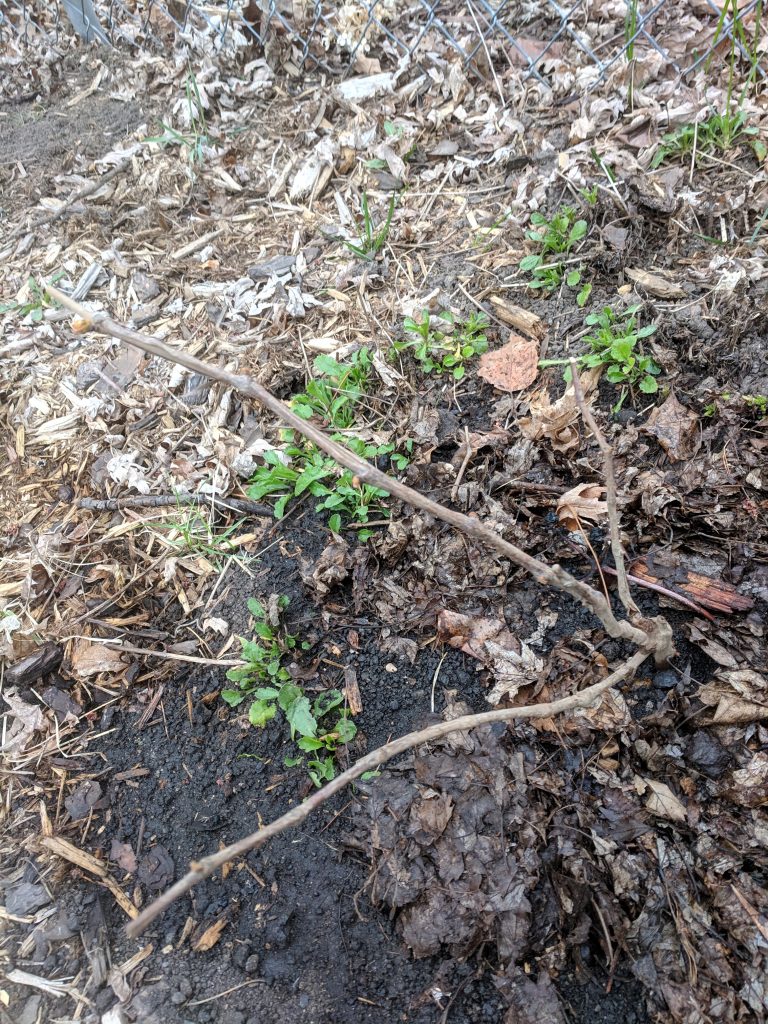In Spring 2018, we started growing grapevines in our home garden in Saint Paul. I did a ton of research on this, especially on Minnesota-hardy grape varieties. I found that the University of Minnesota actually does a bunch of research on cold weather grapes, both creating new grape varieties that grow well in cold weather climates, and providing information to vineyards in the area.
I ordered three vines from Wallace Woodstock, a Wisconsin-based nursery that I’ve had very good results from in the past. I focused primarily on varieties that are good for fresh eating, and that UMN declares as cold-hardy. I’m not planning to do wine making with the grapes we grow, though if we get some crazy good harvests, that may end up happening simply as a way of preserving the grapes rather than letting them go to waste.
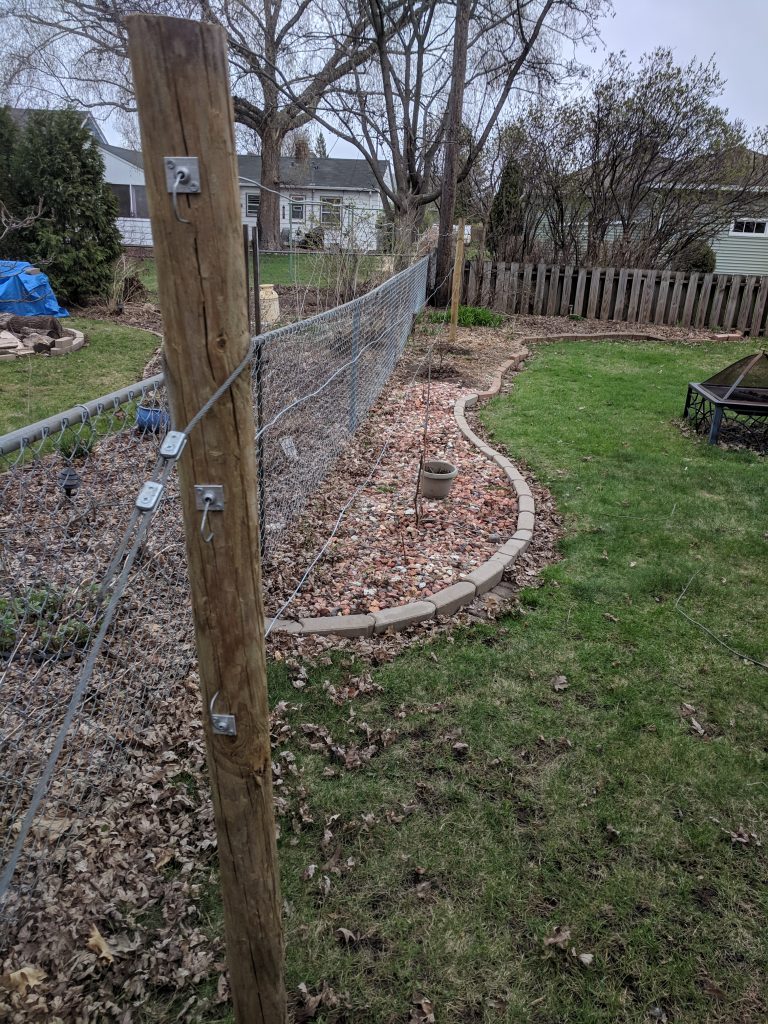
While waiting for the grapes to arrive, I studied vineyard management and grape pruning. My primary resource was a book recommended by a friend, From Vines to Wines by Jeff Cox (Storey Books, 1999), though I supplemented that with lots of online reading. I chose to build a 3-wire trellis, planning to prune the vines into a 4- or possibly 6-arm Kniffen system. I believe most of our grape varieties are downward-growing, so the lower trellis wire may be used to support fruit in the 4-arm system, instead of two extra arms. My understanding is you want balance vegetation vs fruiting, so how they grow will impact my trellising and pruning strategies.
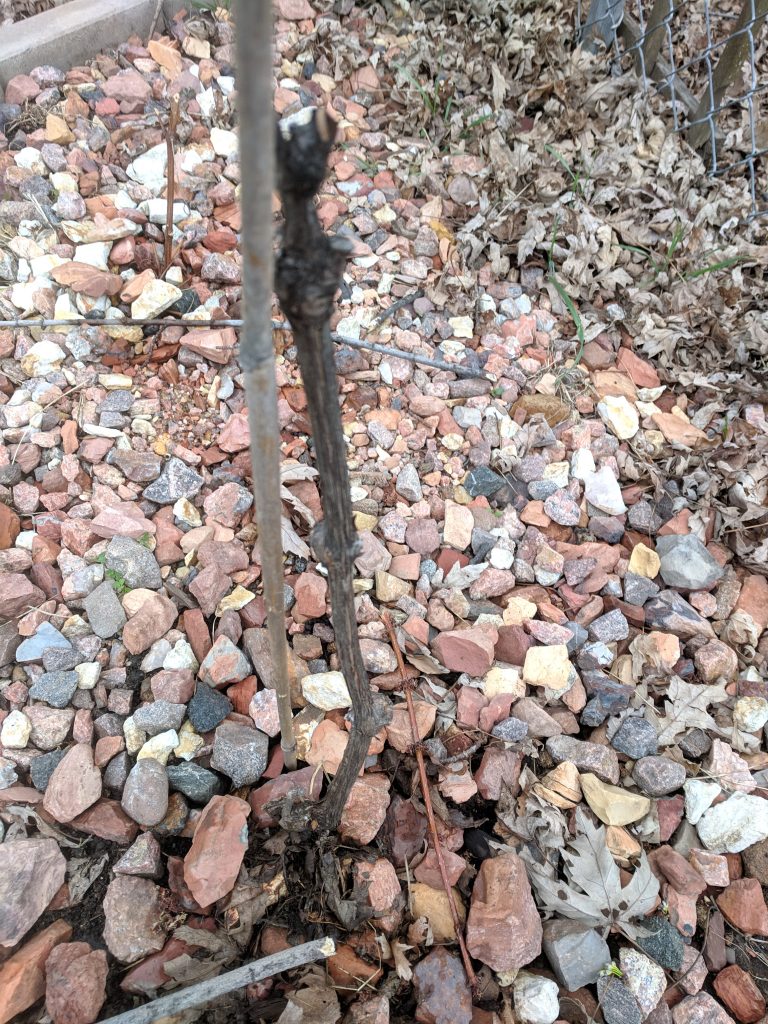
I chose to mulch with stone, which is strongly recommended by the book if you can put up with laying stones. Since I’m only growing a single trellis in a single garden bed, this seemed worth the effort.
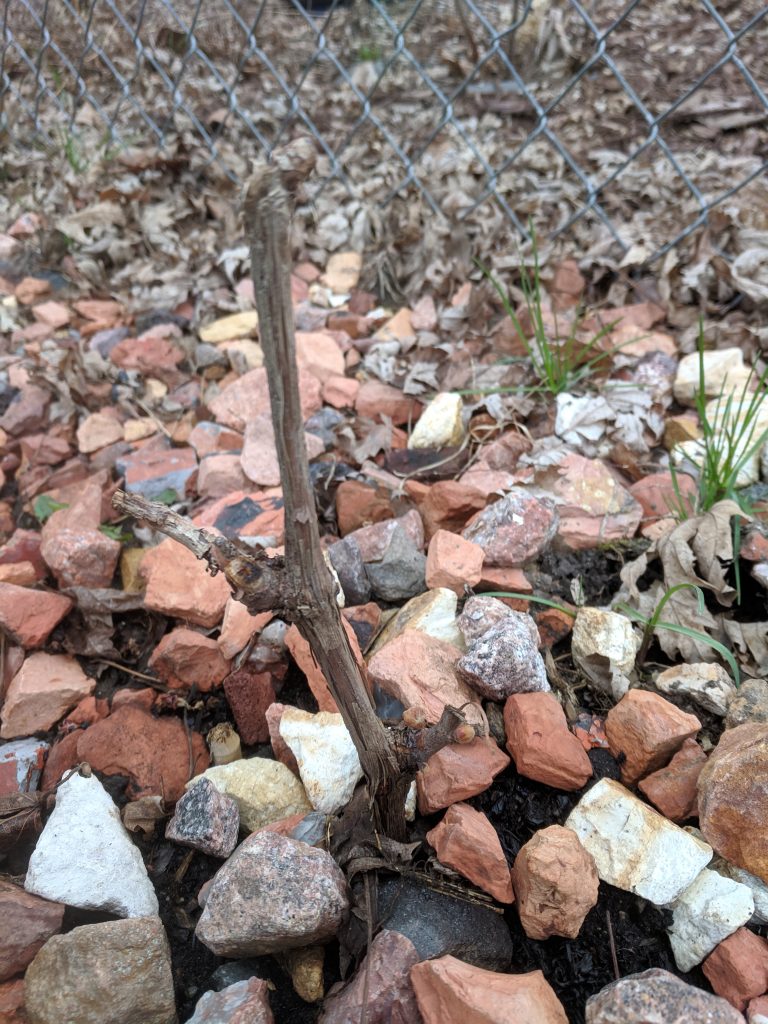
The three grapes I ordered were planted in the Spring of 2018 and did very well through the year. I let each of them grow three shoots, and arranged them to grow upwards along a bamboo cane. All three reached the lowest trellis wire, and the Frontenac shot all the way up to the top of the trellis and a couple feet along the length of it by the end of summer. As the year came to a close, I planned to let the shoots stay on the trellis over winter and prune the smaller two back down to the original plant to regrow up the trellis with the strength of the established roots in 2019. I decided not to prune the Frontenac’s shoot, since it was already well established all the way up the trellis.
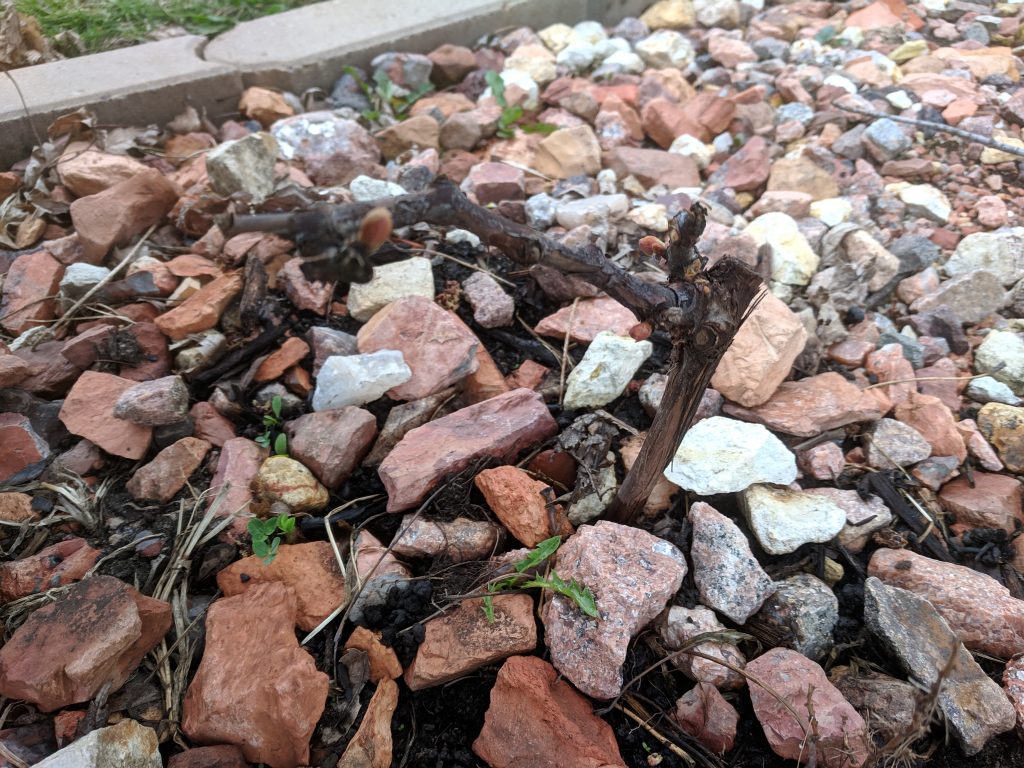
Then the rabbits hit over winter. They took down all of the shoots on all three grapevines back down to the plant. Like I said, I was planning to do this anyway, so it was no great loss. But I would have liked to do it on my terms, and I would have liked to let the Frontenac fruit a bit this year. Oh well.
That brings us to now, Spring 2019. All three grapevines survived the rabbit attacks and the very cold winter and have started putting out a bunch of new leaf buds this week. I nipped them back to three buds per plant again. I plan to select a single shoot from each plant after they are established, and prune out the others. My hope is that all three vines will reach the top of the trellis this year, and be in really good shape for Spring 2020 to get our first real harvest. If they do very well, I may even let one or two grape bunches grow this year.
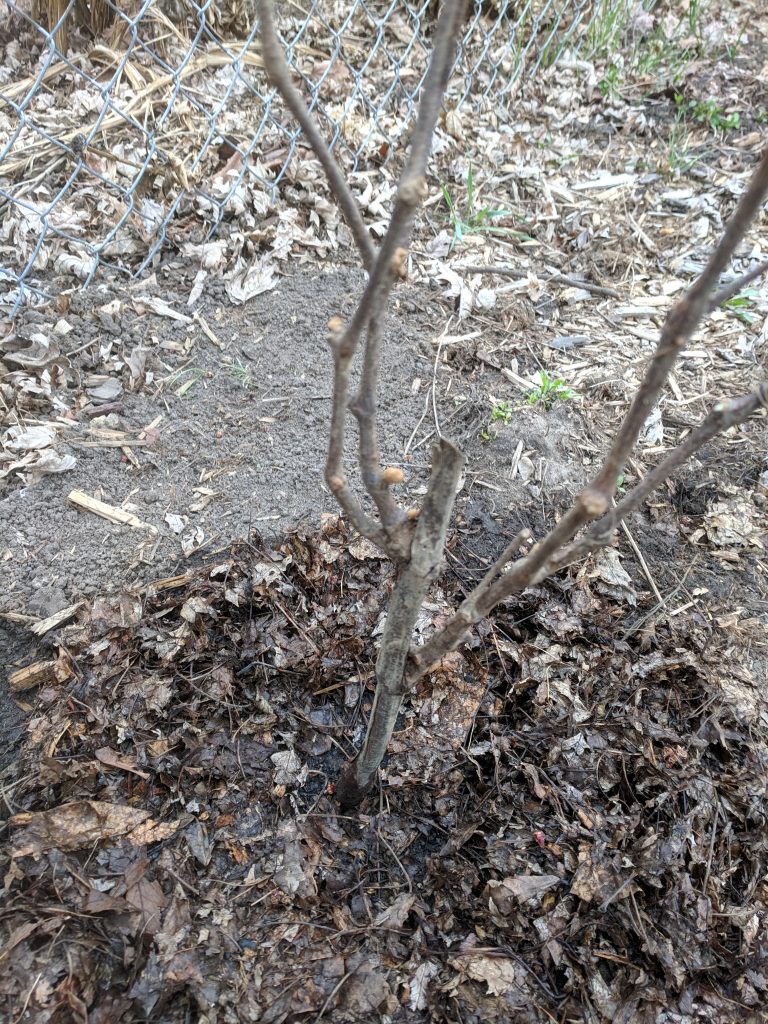
Since the vines did so well in 2018, I ordered two more to fill out some of the trellis width in 2019. Those arrived this week and are now planted. I’m real excited to see how they do! But first I need to go construct some rabbit fencing…
